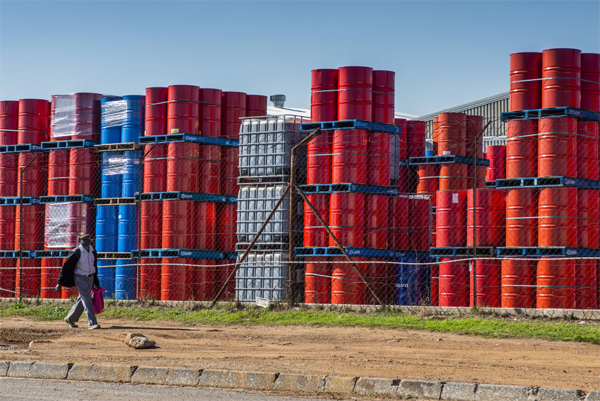
Myra P. Saefong and Williams Watts, MarketWatch
SAN FRANCISCO/NEW YORK
EnergiesNet.com 10 18 2022
Oil futures ended lower on Tuesday, as talk of another release of crude from the U.S. Strategic Petroleum Reserve combined with ongoing fears of a recession that could slow energy demand to push prices to their lowest settlement in more than two weeks.
Price action
- West Texas Intermediate crude for November delivery CL.1, 0.72% CLX22, 0.72% CL00, 0.66% was down $2.64, or 3.1%, to settle at $82.82 a barrel on the New York Mercantile Exchange, with the contract ending at its lowest level since Sept. 30, according to Dow Jones Market Data.
- December Brent crude BRN00, 0.68% BRNZ22, +0.68%, the global benchmark, declined by $1.59, or 1.7%, to $90.03 a barrel on ICE Futures Europe, the lowest since Oct. 3.
- Back on Nymex, November gasoline RBX22, 0.64% fell 1.6% to $2.5506 a gallon.
- November heating oil HOX22, -0.25% lost 2.2% at $3.9935 a gallon.
- November natural gas NGX22, -0.33% fell 4.2% to $5.745 per million British thermal units after dropping 7% on Monday.
Market drivers
Bloomberg reported that the Biden administration is moving toward a release of another 10 million to 15 million barrels of oil from the SPR in an effort to keep gasoline prices from rising further. A release would be the latest tranche of a 180-million-barrel program of releases that began earlier this year.
Multiple White House officials say Biden could order an additional release as early as Wednesday, according to the Associated Press. The White House said Tuesday that President Joe Biden will speak about gasoline prices on Wednesday.
Read: Why you can’t count on another SPR oil release to cut gasoline prices at the pump
The move would come after the U.S. has already drawn down SPR inventories to the lowest level since 1982, said Phil Flynn, senior market analyst at The Price Futures Group.
The Biden administration in late March had announced the release of 1 million barrels of oil per day for the next six months from the SPR, for a total of more than 180 million barrels in total. It’s already released 165 million barrels of that 180 million barrels, according to Flynn.
If the Organization of the Petroleum Exporting Countries “sees fit, they could easily offset another SPR release and probably will have the incentive to do so because the Biden administration hasn’t exactly been very diplomatic with Saudi Arabia or the rest of the cartel,” said Flynn, in a daily report.
Crude has given back a large chunk of the gains scored in the first week of October when OPEC+ — made up of OPEC and allies including Russia — agreed to cut production by 2 million barrels a day beginning in November. The actual cut is expected to be around half that size since several producers were already pumping below their targets, but the move was still seen as significant, particularly as the group made the decision to cut despite calls from the Biden administration to raise output.
“On the near-term horizon, the clash between the U.S. and OPEC+ continues to heat up and underscores the political nature of some potential bearish for oil catalysts,” said Stephen Innes, managing partner at SPI Asset Management, in a recent note. “Given OPEC’s current stance on production, the U.S. has every incentive to progress talks with Iran and Venezuela, especially ahead of the U.S. midterm elections.”
On Monday, strong gains for U.S. equities and a weaker dollar failed to push oil prices higher, noted Warren Patterson, head of commodities strategy at ING, in a note.
“Instead, the market still seems wary of the demand outlook for the market. President Xi has made it clear that China will continue to follow a zero-COVID policy, which raises uncertainty over Chinese oil demand through 2023. Recession concerns elsewhere only add to the market’s uncertainty,” he wrote.
Meanwhile, the Energy Information Administration will release its weekly U.S. petroleum inventory report on Wednesday morning. On average, analysts polled by S&P Global Commodity Insights forecast supply declines of 1.2 million barrels for crude, 2.2 million barrels for gasoline, and 2.5 million for distillates.
marketwatch.com 10 18 2022











